Corvette Stingray 1963
Chevrolet introduced its second generation Corvette in 1963, a Decade after the original model debuted. As the Corvette became the outstanding sports car and flagship of GM, considerable resources were dedicated to research and development of the new generation. The 1963 Corvette featured an all-new platform, suspension, engine, and visually striking body design, making him one of the most fascinating cars of the 1960s.
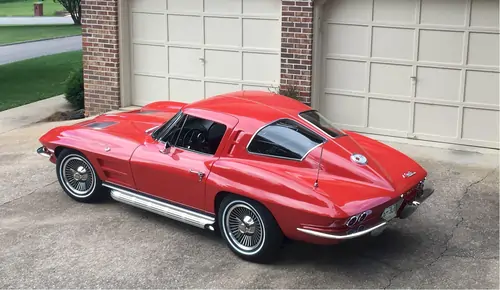
The Corvette Stingray’s name was inspired by GM’s 1961 Stingray concept, which has a visual resemblance to marine life. The Stingray boasts the Googie design language with its bulging fenders, rounded cabin and split rear window complete with closed headlights. Its power is taken from the 327 CID V8 engine with four power levels: 250, 300, 340 and 360 HP with fuel injection. The Stingray proved extremely popular with buyers, setting new sales records with more than 20,000 units produced.
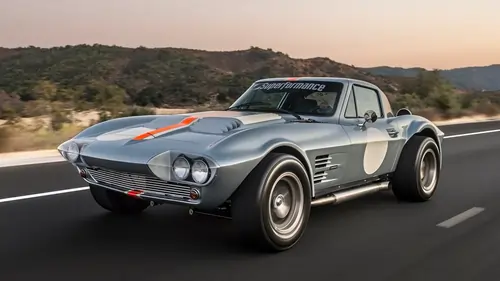
Corvette Grand Sport 1963
By the early 1960s, the Corvette had hit the market, making it necessary to demonstrate its capabilities on the track. During this period, however, the Ford-built Shelby Cobra was the reigning champion on the track, and the Corvette team aimed to surpass it. To achieve this, Zora and her team modified the bodywork, suspension, engine and other key components of five Grand Sport Corvettes, specially designed for racing.
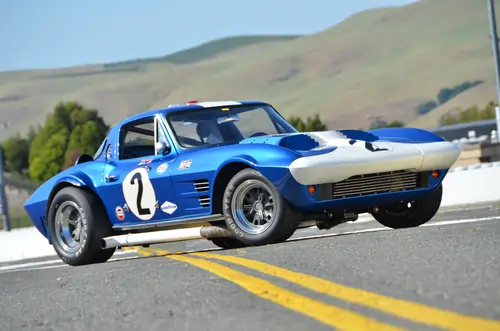
The formidable Corvette Grand Sport boasts an incredible 550+ horsepower and impressive performance. Despite the ambitious plans of the Corvette team and the participation of Grand Sport models in a number of races, their success has been inconsistent. Unfortunately, General Motors’ superiors abruptly stopped all racing projects in early 1963, including the promising Grand Sport program. This decision prevented the Corvette Grand Sport from reaching its full potential, making it one of the most compelling stories in motorsport history. However, all five vehicles still exist to this day and are recorded.
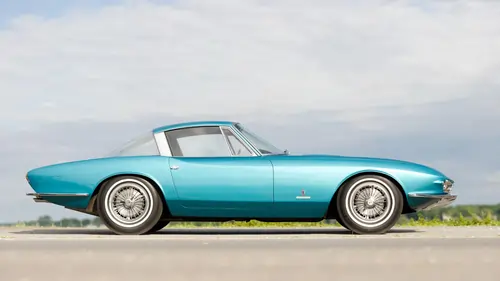
Corvette Rondine Pininfarina 1963
The 1963 Chevrolet Corvette Stingray made a profound impact on the global automotive community with its striking styling, bold lines, split-window features and outstanding performance that embody the pinnacle of sports car excellence. of America. However, in Turin, Italy, the talented designers at Pininfarina think they can make it through. Having the opportunity to cooperate with Chevrolet, they decided to show their abilities.

Chevrolet ordered the Corvette Rondine, which debuted at the 1963 Paris Motor Show as a fully functional working concept car. The car was displayed on the General Motors booth and boasted a 327/360 V8 engine, a 4-speed manual transmission and disc brakes.
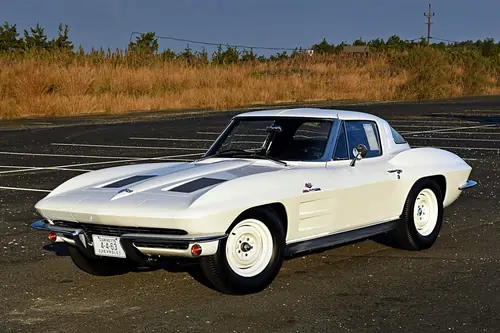
Corvette Z06 1963
The ’63 Z06 is a factory-built race car for private teams and amateur racers looking to use it on the track. It offers a ton of customizable options, including one great feature: A 36.5-gallon gas tank specially designed for endurance races. Due to this special attribute, the Corvette is nicknamed “The Tanker”.
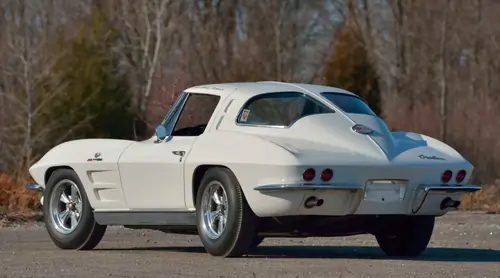
The price of the Corvette ’63 is higher than the standard version and Chevrolet produces a limited number of only 199 units. The majority of these cars have been heavily used at various racetracks across the United States, with only a few remaining in their original condition.

Corvette Stingray 1966-1967
The Corvette Stingray didn’t change much visually during its life on the market. Split windows were eliminated in 1964, and four-wheel disc brakes became standard in 1965. in 1966, a big-block engine was available to performance-hungry Corvette fans for the first time.
For this reason, the 1966-1967 Corvette is on this list as one of the most important years in the model’s long history. The introduction of the big-block engine, first in the form of the 396 and then as a 427 V8, made the Corvette a powerful monster with 390 to 435 HP on offer. If you went for the famous L-88 option, you could get one of the fastest cars of the late 60s. It was a true powerhouse with a conservatively stated 435 HP engine under the hood.
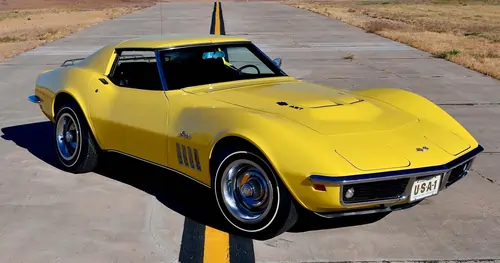
Corvette ZL1 1969
The new, third-generation Corvette was introduced in 1968 and brought a sleek new design, the so-called “Coke Bottle” look. The mechanicals, chassis and drivetrain remained the same, and the car still offered good value. The C3 generation brought us some of the most powerful Corvettes, and none was more powerful than the ultra-rare and legendary ZL1.
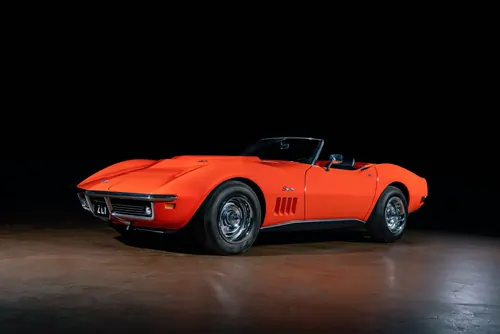
At the heart of the ZL1 was the near-racing 427 all- aluminum V8 with up to 550 HP in mildtune. Chevrolet also built about 12 test Corvettes with this engine in late 1968. Its power potential was incredible and Chevrolet wanted to avoid offering this wild racing engine to the general public. As a result, the ZL-1 option was never mentioned in the press or in official brochures. However, wealthy individuals knew of its existence and were able to purchase the ZL-1. For this reason, only two Corvette ZL-1 examples are known to exist. The yellow and the white one, one with manual transmission and one with automatic transmission.
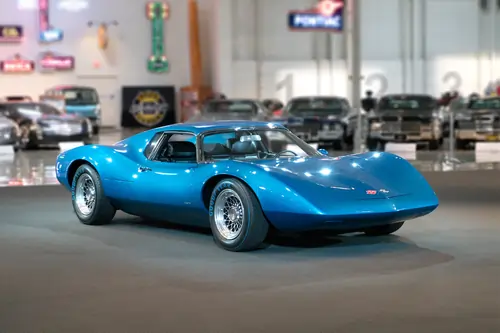
Astro II XP-880 1968
Although this concept wasn’t officially named Corvette, everyone at the 1968 New York Auto Show knew this was the study of the next generation of America’s favorite sports car. At the time, Zora Arkus Duntov, a Chevrolet engineer, and Bill Mitchell, head of the design department at GM, lobbied for the Corvette to be mid-engined for better weight distribution and performance
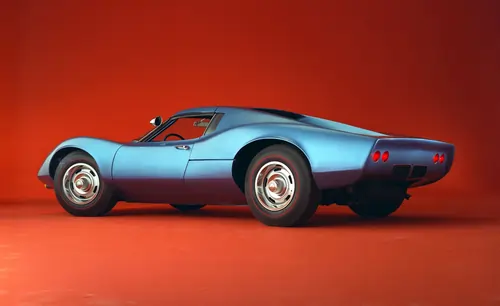
The Astro II was one of the first in a long line of mid-engine Corvette concepts, and it looked like Chevrolet would produce it for a while. The concept was a full working prototype with the engine behind the passengers (390 HP big block V8) driving the rear wheels and giving the Astro II very convincing performance.

Corvette LT1 1970
The big-block 427 and 454 engines were in high demand in the early 1970s, but Chevy introduced a fantastic option with the 350 LT1 package. Unlike big and heavy engines, the LT1 was a perfectly balanced and lightweight V8 with 300 HP and great driving dynamics. This Corvette was one of the best models available as a coupe or convertible, offering great performance and fuel economy at a reasonable price.
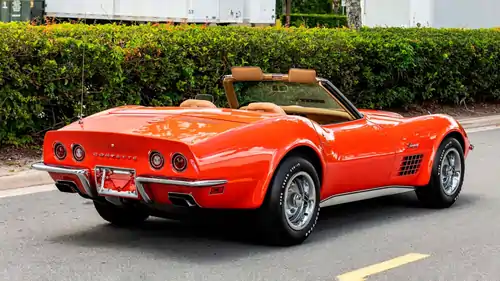
Although big-block Corvettes were the first to skyrocket in today’s classic car market, more and more customers are choosing the LT1 for its perfect driving feel and balance.
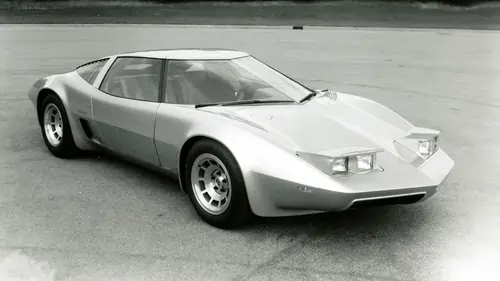
Corvette Aerovette Wankel Concept 1973
The mid-engine layout has been the obsession of Corvette engineers for decades. Between 1960 and 1977, there were about 10 fully functional Corvette prototypes with this powertrain layout. However, one of them is a bit more interesting than the others – the 1973 Aerovette Wankel concept.

The most important feature of this car was the engine. This Corvette had an advanced four-rotor Wankel engine with more than 400 HP of 390 CID. In the early 1970s, all manufacturers were experimenting with Wankel engines, looking for a cheaper, more powerful, and more efficient alternative to conventional piston engines. Chevrolet realized that its car with a Wankel engine retained the power level of a big-block V8 engine, but in a much lighter and higher revving package.
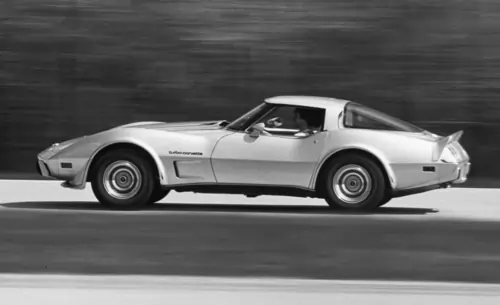
Corvette C3 Turbo 1979
The late 1970s were a sad time for American performance. All cars were losing power and becoming more and more boring. The Corvette wasn’t the exception. To bring performance back, Corvette engineers developed the C3 Turbo as a factory prototype.

The C3 used an L82 350 V8 engine with turbocharger and Cadillac fuel injection. Reportedly, the 1979 turbo Corvette prototype was capable of up to 300 HP, which was insane for the time. To achieve this performance, however, racing gasoline with 103 octane was needed
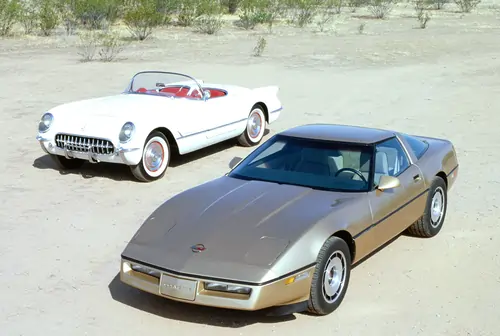
Corvette C4 1984
Introduced in 1984, the C4 Corvette is a true classic of the 1980s. The wedge-shaped body, pop-up headlights, tailgate and bright colors made this car a true pop culture icon. But this car is much more than just a fun cliché. The C4 was the car that single-handedly saved the Corvette from the demise caused by the recession and lack of popularity.
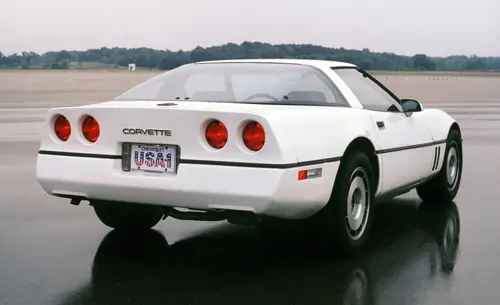
In 1984, however, everything changed with the introduction of the C4. The car was new from the ground up. With a new chassis, new engines and a new design with a digital dashboard in the interior. Over the years, Chevrolet managed to transform it into a world-class sports car. Its performance and road handling could compete with European exotics that were far more expensive. The C4’s chassis is so good that it is still used (in modified modern form) for the current C7 generation. in 1986, Chevrolet launched the first Corvette convertible in 12 years, which further boosted sales.
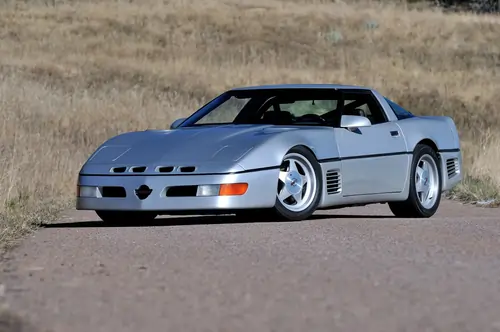
Callaway Corvette C4 Sledgehammer 1988
Rives Callaway founded Callaway Cars in 1977, long after the muscle car craze had died down, high-horsepower, high-performance machines were a thing of the past. He specialized in manufacturing turbocharger kits that were installed primarily in European cars. His knowledge, experience and the dawn of the turbo era were a perfect match and the company took off.
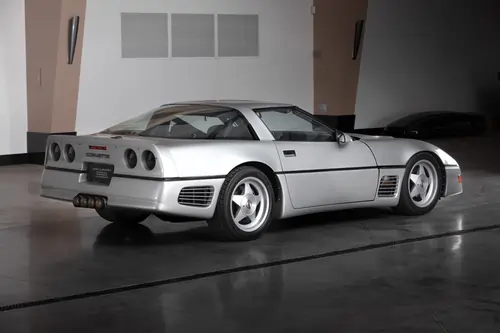
To show the true potential of the twin-turbo C4, Callaway produced the legendary Sledgehammer Corvette, a heavily modified and heavily supercharged 1988 Corvette with 898 HP and a top speed of over 250 mph.
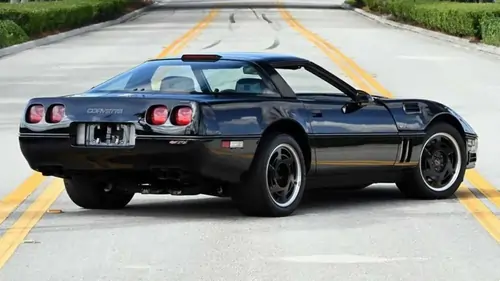
Corvette ZR1 1990
Chevrolet engineers knew the C4 chassis had tremendous potential and were always looking for ways to improve power and performance. Finally, they got the green light from management to introduce the best Corvette model in years. To show the sports car world what the Corvette was capable of, the ZR-1 left the factory in 1990 with a mighty 400 HP. That was a performance that could beat any Ferrari at the time.
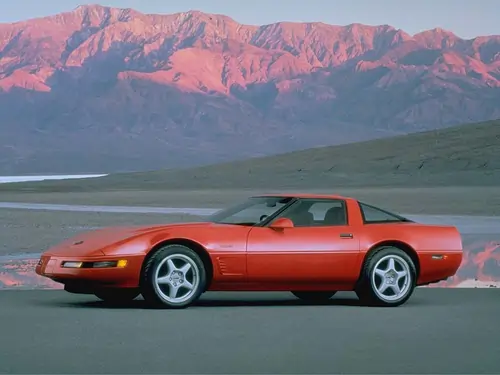
Called the “King of the Hill,” the ZR1 was precisely that. It was immediately obvious that Chevrolet hit a home run. Under the hood, there was the LT4, a Lotus-engineered V8 engine with 375 HP (later 400), quad-cam heads, and 32 valves. The engine was an engineering marvel and performed exceptionally well. With the beefed-up suspension, gearbox, and a pair of extra wide rear tires, the Corvette ZR1 could accelerate from 0 to 60 mph in 4.5 seconds. This meant it was one of the fastest cars of the era and a true modern classic.
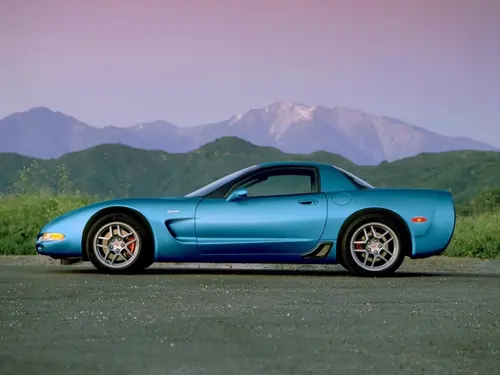
Corvette Z06 2002
The C5 Corvette was introduced in 1997 and brought some improvements with its new design. Underneath the sleek fiberglass body was an upgraded suspension, a new 350 HP engine and a transaxle transmission. This meant that the entire transmission was moved to the rear axle, which improved balance and handling.

The standard versions were well received, but the best model of this generation was the mighty Z06. This model got its name from a special 1963 version of the Corvette, which was intended to be the basis for road racing cars before Chevy stopped racing. The modern Z06 was a beefed-up base Corvette with 385 to 405 HP from a high-revving 5.7-liter V8 engine. With its lightweight body, Goodyear tires and stiffer suspension, the car handled perfectly. Today, more than 15 years after its introduction, the C5 Z06 is still a hard car to beat on the roads.
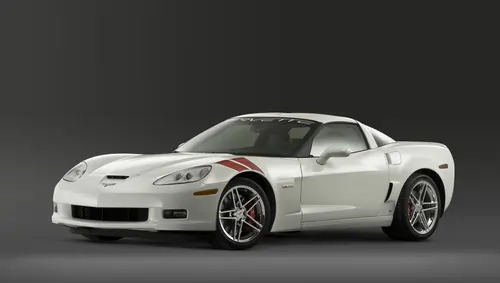
Chevrolet Corvette Z06 2006
By the time the sixth-generation Corvette hit the market in 2003, the Z06 name had become a byword for superior Corvettes. The C6 model was no different, receiving its Z06 version in 2005. Although this version underwent only minor exterior changes, it was recognizable and featured a wider track, different headlights and side vents.
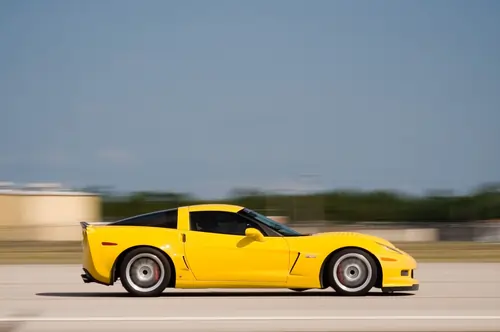
But the real fun, as always, took place under the hood. The hand-built and all-aluminum LS7 7.0-liter V8 engine sat between the fenders and produced 505 HP and over 470 lb.-ft. of torque. With a dry sump system, forged internals and the ability to deliver a lot of power. It was also the last time a true seven-liter engine in a Corvette connected the C6 Z06 to the legendary 427 Corvettes of the past.
Corvette ZR1 2009
The sixth-generation Corvette was introduced in 2004, bringing Corvette enthusiasts an improved design, powertrain and engine selection over the old C5 Vette. Interestingly, the C6 had normal headlights, the first time since 1962 and the last year C1 Corvette. The engine lineup started with a 6.0-litre V8 that delivered 400 HP, more than enough for compelling performance.
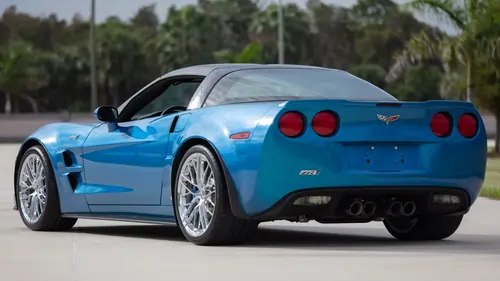
In 2009, the brand-new Corvette ZR1 saw the light of day and astonished the entire automotive world. Under the glass hood was a supercharged 6.2-liter LS9 engine with an output of 638 HP. That was enough to accelerate this hand-built sports car from 0 to 60 mph in 3.5 seconds, and it reached a top speed of 205 mph. The ZR1 was not only the best and most powerful, but also the most expensive new Corvette in history, with an MSRP of over $100,000.
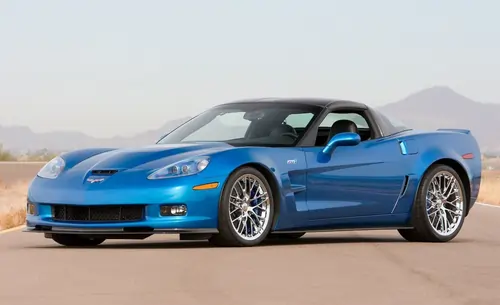
Corvette C6-R 2006
In the late 1990s, Chevrolet decided to enter the GT racing scene with the C5 R, a purpose-built race car. The C5 R proved to be extremely successful and paved the way for the C6 R, the next generation. It featured an improved engine and better technology and became one of the most successful American race cars of all time.
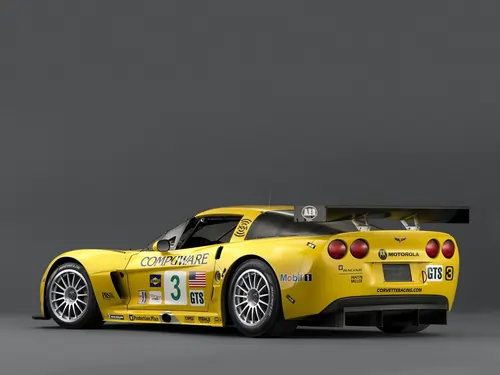
The C6 R debuted in 2005 and remained in racing use until 2013. That was quite a long time for a high-tech racing machine. The car was based on the Corvette Z06 and featured multiple V8 engines with displacements ranging from 5.5 to 7.0 liters. The Corvette C5 R proved to be extremely reliable and fast. It was well received by racing teams around the world. In 2006, this yellow beast managed to make history by taking the class win at Le Mans – a success that has been repeated several more times since.
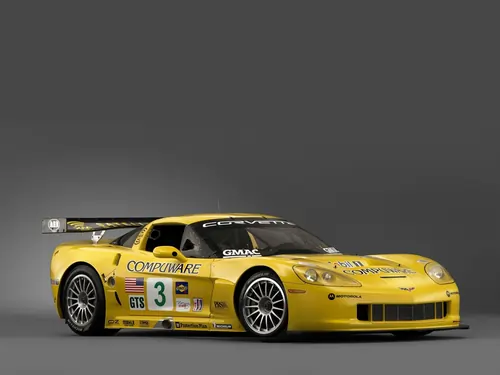
Corvette Z06 2015
In late 2013, the world witnessed the debut of the seventh-generation Corvette called the Stingray. It was the first time this name had been used since 1967. The competition was evolving, although the C6 was a very good car. And Chevrolet had to introduce a brand new and much improved model to keep the Corvette relevant in the sports car market.
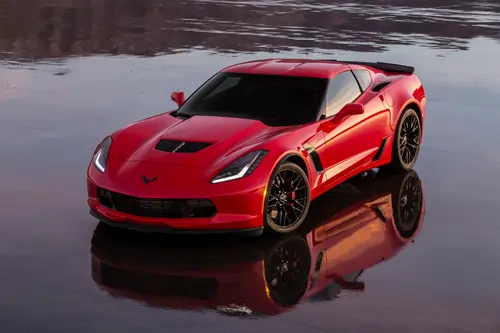
Although the base C7 Corvette is more than capable of delivering exhilarating performance, Chevy quickly introduced the crazy Z06 package. It changed the design with a 650 HP supercharged engine and a series of performance upgrades. The Z06 is basically a souped-up C7 Corvette with edgy handling, great performance and a dramatic look; all the things sports car fans rave about.

Corvette Grand Sport 2017
Chevrolet recognized that the Z06 was too much of a good thing for some buyers. And despite its fantastic looks and brutal performance, the car was close to the limits of the front engine. So they developed an exciting hybrid model. The 2017 Grand Sport proved to be one of the best Corvettes ever built.

Named after the ill-fated racing Vettes of the early 1960s, the modern Grand Sport has a 460 HP engine from the regular Corvette with a wide body and track from the Z06. This combination proved to be a recipe for success. The Grand Sport had normal handling and improved driving dynamics from a wider track, while retaining the dramatic looks of the Z06.
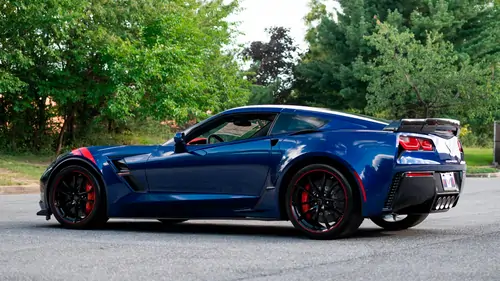
Corvette ZR1 2019
Just when you thought Chevrolet was giving up on boosting the C7 Corvette’s performance and focusing on balancing the already powerful car, Chevy surprises the market with the crazy 2019 Corvette ZR1.
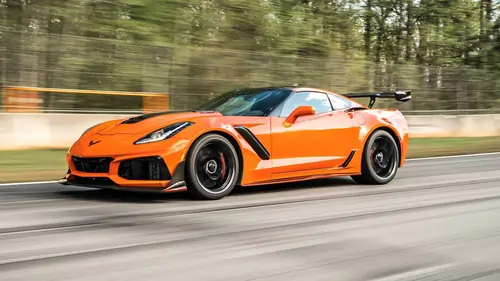
This version of the C7 features an upgraded Z06 chassis, suspension, powertrain and an absolute hammer engine. The heavily supercharged 6.2-litre LT4 engine produces 755 HP and 527 lb.-ft. of torque and sends power to the rear wheels through an automatic or manual transmission.
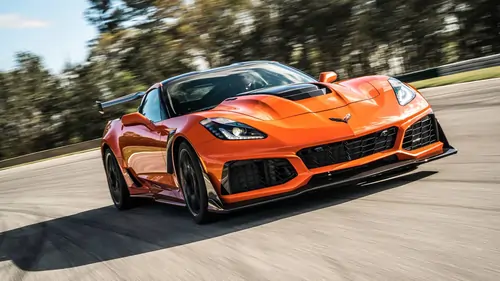
Corvette C8 2021
The 2021 Corvette C8 is one of the most controversial cars of our time. It was the long-awaited 8th generation model and the freshest Corvette ever. Not only because of its design, but also because of a variety of technical solutions, features and advances. First of all, the C8 is a mid-engine sports car, which some consider sacrilege. The Corvette had been a front-engine sports car since 1953. Nevertheless, the engineers at GM, realized that they had to change the position of the engine to keep the Corvette competitive and give it the handling it needed.

In addition to the all-new chassis and design, the C8 has retained the small-block V8 engine in the form of a modern LT2 6.2-liter V8 with 490 HP. This engine is only available with automatic transmission, which is another controversy, but the results are amazing. The standard C8 could accelerate to 60 mph in less than three seconds and reach a top speed of 200 mph. Customers have realized how historically significant this model is, and the C8 is a hot commodity right now.
Corvette Z06 2023
f you think the Corvette C8 is a fantastic machine, you’re right. But Chevrolet has just started producing models based on this innovative architecture. The first special version is the Z06 and it’s a truly groundbreaking machine. As always, the Z06 is a more performance-oriented model with a unique engine and unique features. the 2023 is all that and more. It’s the most powerful naturally aspirated sports car you can buy right now. This real beast has 670 HP, which comes from a screaming, flat 5.5-litre V8.
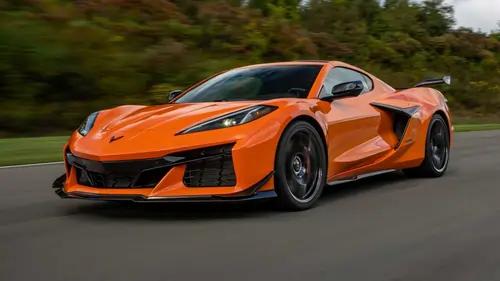
But the power and incredible noise from the four tailpipes are not everything. The C8 Z06 has a dual-clutch transmission and a specially tuned suspension. Thank you to these features, it is insanely powerful on the racetrack and significantly faster than the standard C8. Of course, this model is also significantly more expensive, costing over $100,000.

So, this article is about the history of corvette. If you also want to know about the Best Biryani In Hyderabad or Best Biryani in Bangalore than read our other article too.






